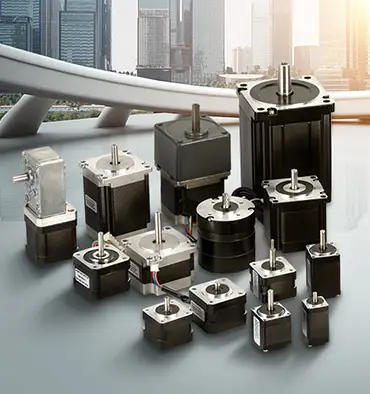How to count stepper motor steps?
Stepper motors are widely used in various applications that require precise control over rotational or linear movement. To effectively utilize stepper motors, it is essential to understand how to count the steps accurately. This article aims to provide a comprehensive guide on counting stepper motor steps, covering the principles behind step counting, methods of implementation, and considerations for accurate step counting. By following these guidelines, professionals in engineering, manufacturing, and technology can ensure precise control and positioning in their stepper motor applications.
I. Understanding Stepper Motor Steps
Before diving into the process of counting stepper motor steps, let's establish a clear understanding of what steps are and how they relate to motor movement:
Step Angle
The step angle refers to the angular displacement produced by each electrical pulse applied to the stepper motor. It represents the smallest increment of movement achievable by the motor.
Full Steps and Microstepping
Stepper motors can operate in full step mode or microstepping mode. In full step mode, the motor moves one step at a time, aligning the rotor to fixed positions. Microstepping allows intermediate positions between full steps, providing smoother motion and finer control.
II. Methods for Counting Stepper Motor Steps
Counting stepper motor steps requires a systematic approach and can be accomplished using various methods. Here are two commonly used methods:
Open-Loop Counting
In open-loop counting, the control system sends a predetermined number of step pulses to the stepper motor. The number of pulses corresponds to the desired movement or position. This method is simple and suitable for applications where precise position feedback is not critical.
Closed-Loop Counting
Closed-loop counting involves using feedback mechanisms to monitor the motor's actual position and compare it to the desired position. This method provides more accurate counting by compensating for any missed steps or errors. Closed-loop counting requires additional hardware, such as encoders or position sensors, to provide feedback for position verification.
III. Implementing Step Counting
To effectively count stepper motor steps, specific steps must be followed during implementation:
- Establish a Control System: Set up a control system that generates the necessary step pulses to drive the stepper motor. This can be done using microcontroller-based systems, dedicated stepper motor drivers, or programmable logic controllers (PLCs).
- Determine Step Counting Method: Choose between open-loop counting or closed-loop counting, based on the requirements of your application. Consider factors such as precision, cost, and complexity.
- Open-Loop Step Counting: If using open-loop counting, calculate the desired number of steps required to achieve the desired movement or position. This calculation is based on the motor's step angle, gear ratios, and mechanical system requirements.
- Closed-Loop Step Counting: For closed-loop counting, integrate feedback mechanisms such as encoders or position sensors with the control system. These sensors provide real-time position information to verify the motor's movement.
- Programming and Signal Generation: Develop the necessary programming logic to generate step pulses based on the chosen counting method. Ensure synchronization between the control system, motor driver, and any feedback sensors.
- Monitoring and Verification: Implement mechanisms to monitor and verify the motor's actual position during operation. This can involve comparing the desired position with the measured position using feedback sensors. Adjustments or corrections can be made based on the deviation.
IV. Considerations for Accurate Step Counting
To achieve accurate step counting, several factors should be considered:
- Motor Specifications: Understand the motor's step angle, gear ratios, and mechanical system characteristics. This information is crucial for calculating the number of steps required for a specific movement.
- Control System Stability: Ensure the stability and reliability of the control system generating the step pulses. Any fluctuations or inconsistencies in the pulse generation can lead to inaccuracies in step counting.
- Mechanical Backlash and Compliance: Take into account any mechanical backlash or compliance in the system. These factors can introduce errors and affect the accuracy of step counting. Compensate for these effects in the control system or mechanical design.
- Sensing and Feedback: If using closed-loop counting, choose appropriate sensing and feedback mechanisms that provide accurate position information. Consider the resolution, accuracy, and response time of the chosen sensors.
V. Conclusion
Counting stepper motor steps accurately is vital for achieving precise control and positioning in various applications. By understanding the principles behind step counting, selecting the appropriate counting method, and considering the necessary implementation steps, professionals in engineering, manufacturing, and technology can ensure accurate and reliable step counting in their stepper motor systems. Whether utilizing open-loop counting for simpler applications or closed-loop counting with feedback mechanisms for higher precision, following these guidelines will enable effective utilization of stepper motors and enhance overall system performance.


Leave a Reply